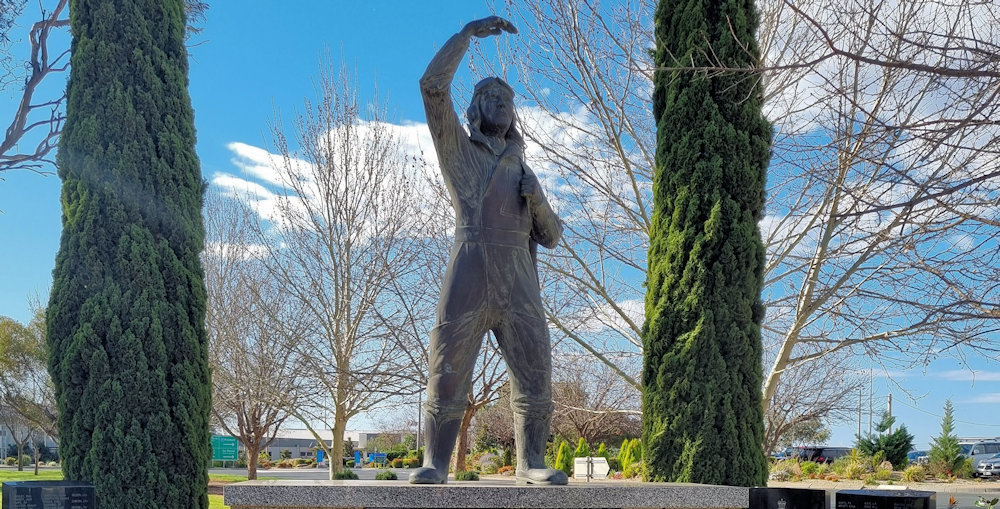RAAF Memorial Mildura Airport
Origins and Wartime Role
The RAAF Memorial at Mildura Airport honours the airmen and ground crew who served with the Royal Australian Air Force’s No. 2 Operational Training Unit (2OTU). During the Second World War, Mildura became one of Australia’s key fighter training bases. In 1939, soon after the nation entered the war, the RAAF selected Mildura as a training site. The original plan was to build a Bombing and Gunnery School, but that changed when the Air Force needed more fighter pilots. No. 2 Operational Training Unit began operations in 1942.
At Mildura, instructors taught pilots to master fighter tactics, navigation, and gunnery. The unit flew aircraft such as the CAC Wirraway, Boomerang, Kittyhawk, Spitfire, and Mustang. By 1946, more than a thousand pilots had graduated from the course. The program carried risks. Accidents during training claimed the lives of fifty-two pilots and seven ground crew members. The memorial ensures that these men, and others who trained or served at Mildura, are remembered by name.
Surviving Wartime Structures
The original RAAF Headquarters building still stands at the airport. Crews built it in 1942 using simple materials and straightforward methods to save time and resources. It is a single-storey, timber-framed structure clad in corrugated metal sheeting. Inside, offices and briefing rooms once housed instructors and operations staff who managed the daily flying schedule.
Today, this historic building serves as the RAAF Museum Mildura. The museum displays photographs, uniforms, logbooks, and technical equipment that reveal how young Australians prepared for combat. Visitors can see the tools of wartime training and read stories about the men who served at the base. Opening times (as at October 2025) were limited to Friday, Saturday and Sunday from 10AM to 2PM.
Design of the Memorial
The RAAF Memorial was dedicated on 20 May 2007 in a ceremony attended by the Chief of the Air Force. Its design blends symbolism with simplicity. A life-sized bronze statue of an airman stands at the centre. The figure represents all who served and did not return. The artist drew inspiration from the story of Pilot Officer Jack Mayall, who lost his life while flying a Hurricane over Malta.
Behind the statue rise three black granite panels. Each panel carries engraved names. One lists those from the Mildura district who died in service. Another records the names of personnel who lost their lives while stationed at Mildura. The third honours those who trained there and later died elsewhere.
Setting and Significance
The memorial stands on a triangular lawn beside Alan Mathews Drive, southeast of the old headquarters building. Open space and mature trees surround it, creating a calm and reflective environment. The placement allows visitors to view both the memorial and the historic building together, linking remembrance with the original site of training.




For other places to visit in Victoria click here

Leave a Reply